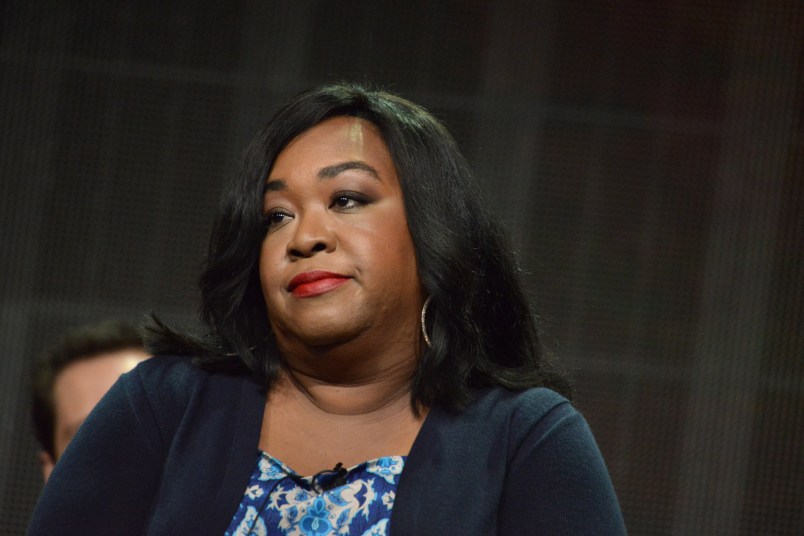New York Times television critic Alessandra Stanley opened her latest piece with a line that made many readers recoil.
In a profile that will be published in the paper’s print edition on Sunday, Stanley examined the career of screenwriter and producer Shonda Rhimes, whose hit shows like “Grey’s Anatomy” and “Scandal” have featured “a powerful, intimidating black woman.”
Stanley, who is white, combined her subject’s history with the title of a new ABC drama that Rhimes’s company will produce to create a cringe-inducing lede.
“When Shonda Rhimes writes her autobiography, it should be called ‘How to Get Away With Being an Angry Black Woman,'” Stanley wrote.
The line drew an extremely negative reaction on Twitter, including from Rhimes.
Not only did Rhimes take umbrage to the title of the faux autobiography, she pointed out that Stanley, a journalist with a long history of factual errors, failed to credit Pete Nowalk as the creator of the new series, “How to Get Away With Murder.”
Stanley, however, told TPM in an email that she doesn’t think the opening sentence — or the ensuing Twitter criticism — does her profile justice.
“The whole point of the piece — once you read past the first 140 characters — is to praise Shonda Rhimes for pushing back so successfully on a tiresome but insidious stereotype,” she told TPM.
Here’s how the criticism of Stanley’s piece went down:
Confused why @nytimes critic doesn’t know identity of CREATOR of show she’s reviewing. @petenowa did u know u were “an angry black woman”?
— shonda rhimes (@shondarhimes) September 19, 2014
Apparently we can be “angry black women” together, because I didn’t know I was one either! @petenowa #LearnSomethingNewEveryday
— shonda rhimes (@shondarhimes) September 19, 2014
Final thing: (then I am gonna do some yoga): how come I am not “an angry black woman” the many times Meredith (or Addison!) rants? @nytimes
— shonda rhimes (@shondarhimes) September 19, 2014
Wait. I’m” angry” AND a ROMANCE WRITER?!! I’m going to need to put down the internet and go dance this one out. Because ish is getting real.
— shonda rhimes (@shondarhimes) September 19, 2014







The New York Times has a long history of woman bashing.
Damn liberal media!
Call it Old Gray Lady privilege!
Perhaps someone should ask Stanley if he has a problem with shows that feature “a powerful, intimidating black woman” and if so, why?
Soooo, someone sticks their finger in your eye, and when you smack their hand, YOU are the angry one???